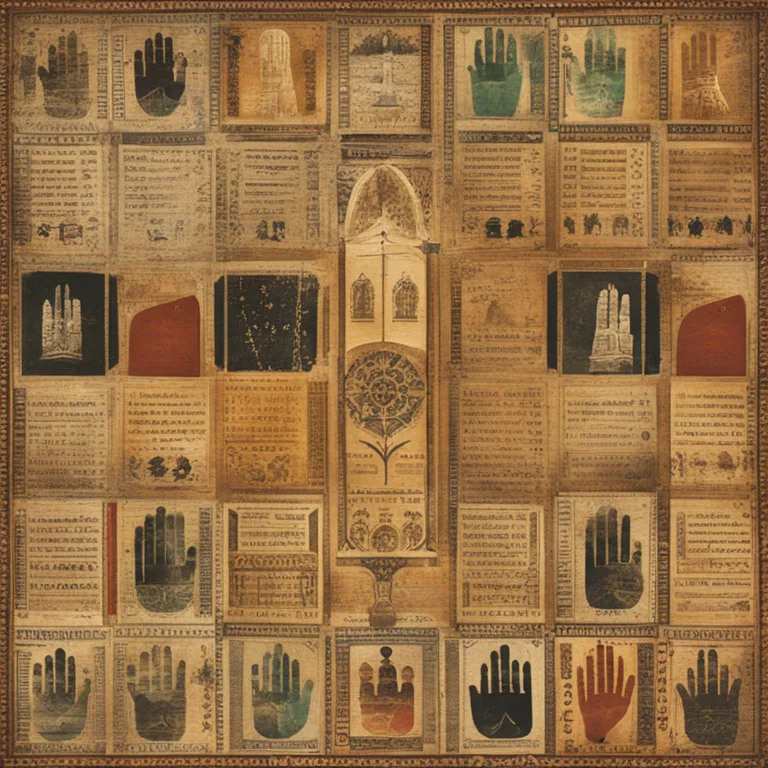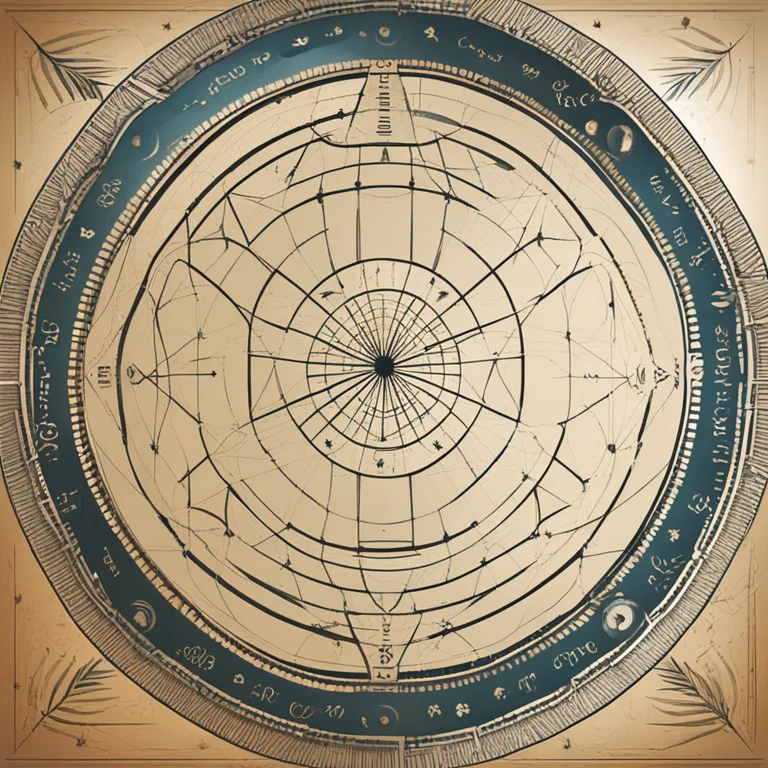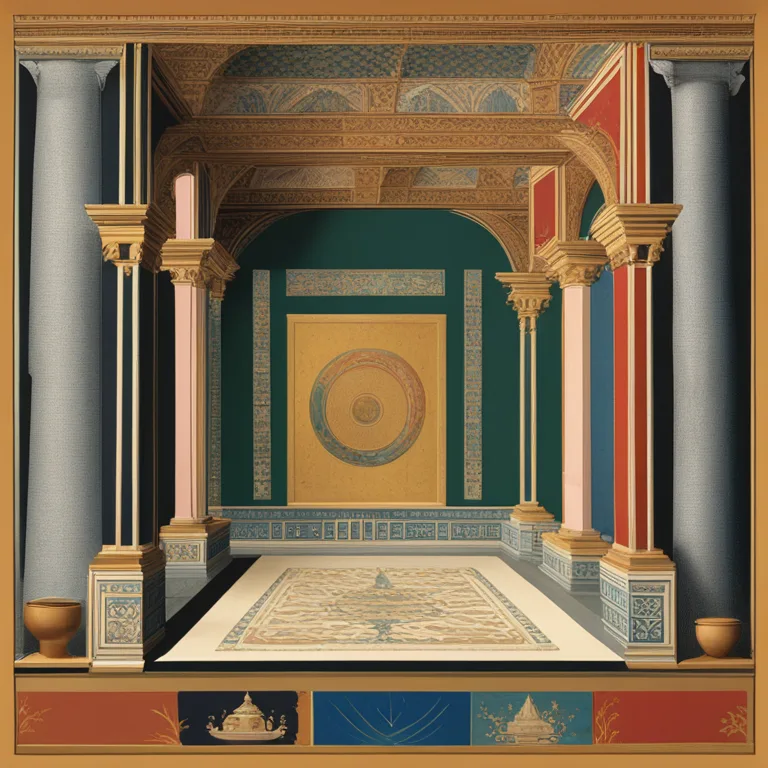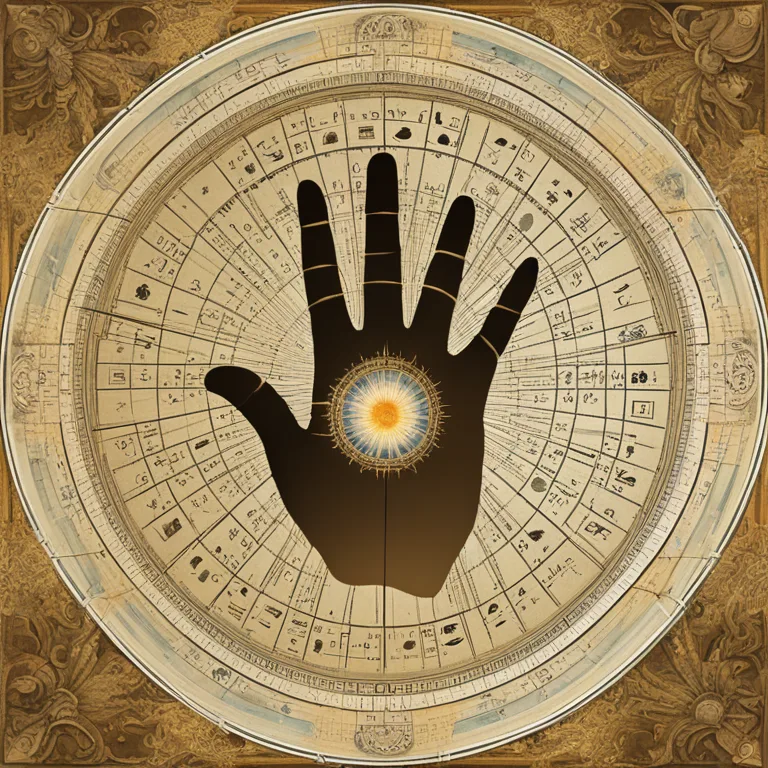
The Origins of Palmistry: Insights Into Its Creation
Delve into the historical roots of palmistry and understand why this ancient practice was created, its purpose, and its enduring allure through the ages.
article by Nora Pennington
The Historical Emergence of Palmistry
Palmistry, or chiromancy, is a practice rooted in antiquity, with a compelling story that spans cultures and continents. Its conception is shrouded in the mists of time, with evidence pointing towards its practice in diverse societies such as ancient India, China, Egypt, and Greece. Initially, palmistry was not merely a tool for divination but was closely tied with the broader studies of astrology and medicine. The lines and features on a person's hand were believed to be indicative of character, health, and the course of one's life trajectory.

Philosophical Foundations and Palmistry
Palmistry's creation was deeply entwined with the philosophical and astrological knowledge of ancient civilizations. In India, the lore of Samudrika Shastra encompassed hand analysis, and it's said to have been part of the Vedas, the extensive scriptures of Hindu wisdom. In ancient China, palm reading was associated with I Ching and the elemental forces that govern existence. Greek philosophers such as Anaxagoras theorized that the hands are a microcosm of the universe, further solidifying palmistry's place in the esoteric wisdom of the past.

Cultural Exchange and the Evolution of Palmistry
As civilizations interacted through conquests and trade, palmistry's lore was exchanged and transformed. Alexander the Great is renowned for his interest in examining the hands of his officers to discern their strengths and weaknesses. The knowledge spread through the Islamic world, with scholars such as Ibn-e-Masoud contributing to its literature. The fascination with palmistry burgeoned in medieval Europe, with the gentry often seeking counsel from palm readers about their future prospects.

Palmistry as a Tool for Self-Understanding
Beyond forecasting the future, palmistry found its purpose as a mirror for self-reflection. It promoted introspection, encouraging individuals to consider their inherent traits and life choices. The link between physical attributes and potential futures rendered palmistry a personal guide for those seeking insight into their personal and spiritual development. As such, it has endured as a popular form of self-analysis.

The Survival and Modern Adaptation of Palmistry
Despite periods of skepticism and decline, particularly during the rationalist critiques of the Enlightenment, palmistry has persisted into the modern era. The digital age has seen a resurgence in interest, with online platforms offering virtual palm readings and apps analyzing hand photos with algorithms. In 2024, the integration of palmistry with technology is a testament to its enduring fascination and the human desire to decode life's mysteries.
The Contemporary Significance of Palmistry
Today's palmistry maintains close ties with its origins by upholding the tradition of seeking to understand life's patterns. The modern practitioner melds ancient techniques with new-age interpretations, catering to a society that is ever-more introspective and spiritually inclined. As we move further into the 21st century, palmistry's creation story remains relevant, reflecting humanity's ongoing quest for wisdom and self-empowerment.
Published: 1/3/2024
Modified: 1/3/2024
More predictions
Come back here soon to learn more about yourself and your future


The Secrets of Palmistry Travel Lines
Discover the meanings behind the travel lines on your palms and how they may hint at your journey through life.


Palmistry Clues to Predicting Parenthood
Delve into the palmistry lines associated with predicting childbirth and learn what your hands may reveal about future family life.


Palmistry Insights on Love: Counting Your Relationships
Discover what palmistry reveals about your romantic journey. This article shares insights on interpreting your palm lines for potential relationships.